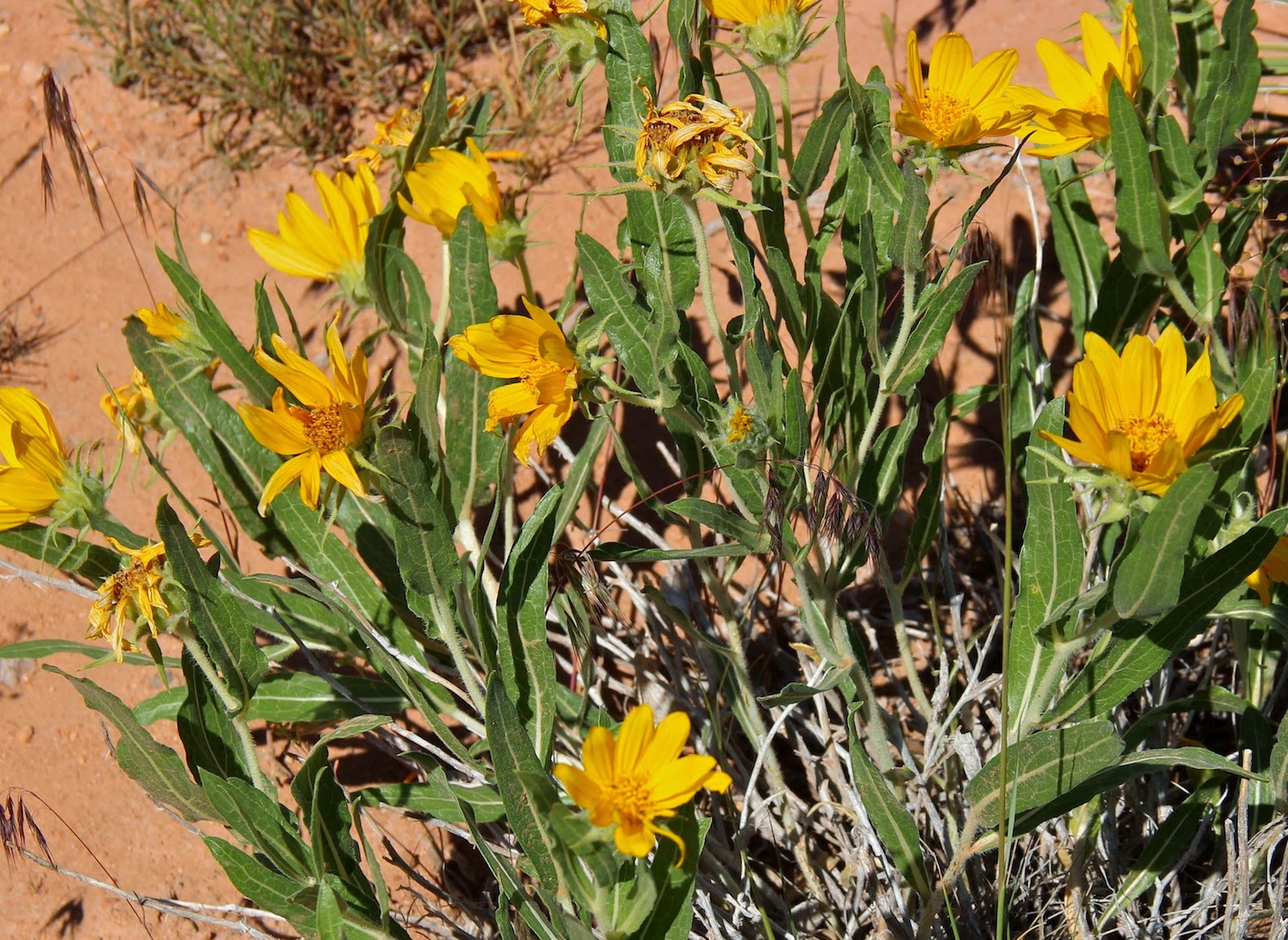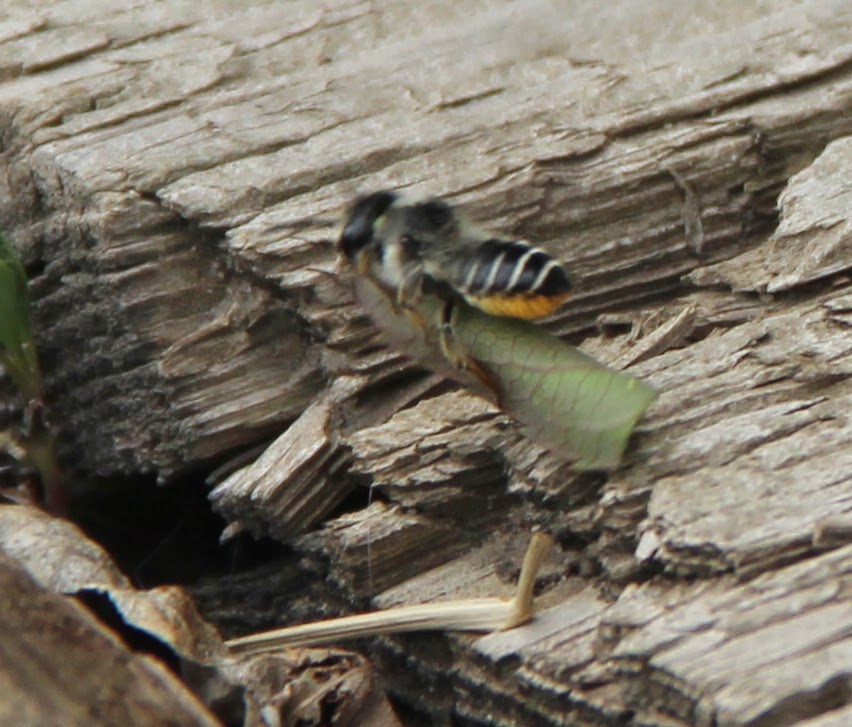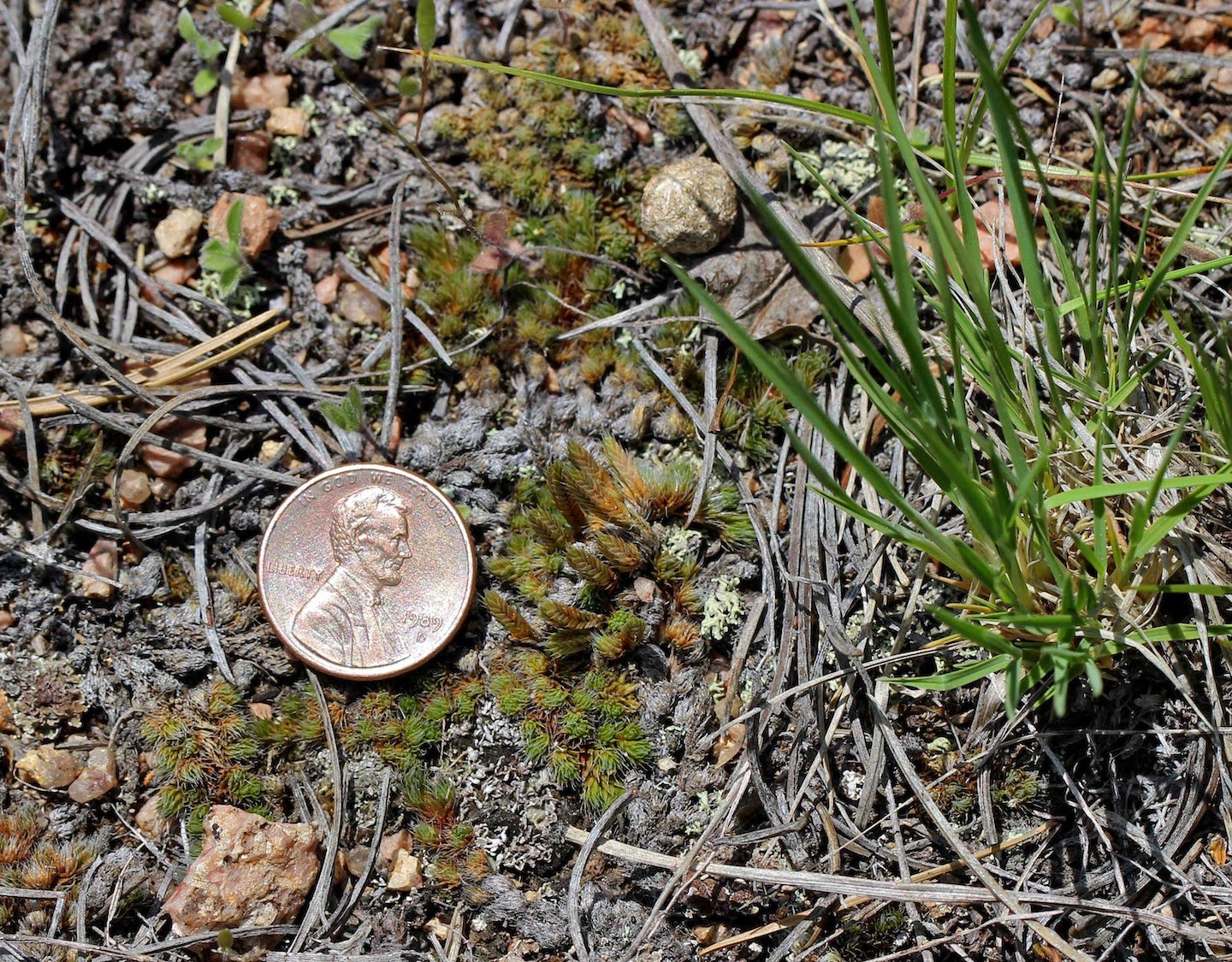This is a typical Heartland landscape, with juniper, small ponderosa pine, sagebrush, mountain mahogany, sparse short grassland and spectacularly tilted rock strata:
It was springtime in the Heartland and wildflowers were out in profusion but keep in mind -- this is a relative concept. The country is dry and vegetation is generally sparse; these are landscapes of muted colors.
The most obvious bloomers were the rough mule’s ears (Scabrethia scabra), with flower heads several inches across.
The most obvious bloomers were the rough mule’s ears (Scabrethia scabra), with flower heads several inches across.
 |
| Rough mule's ears, with yucca, sagebrush, blackbrush and other highly drought-tolerant plants. |
Real mule’s ears (Wyethia) has leaves that really do look like a mule’s ears. But this close relative gets the same name even though its leaves don’t match. However, they’re definitely rough to the touch (scabrous).
Most of the wildflowers were not nearly as showy as mule's ears. But in the harsh dry setting, even plants like wild buckwheat and desert sandwort were impressive.
 |
| Wild buckwheat (Eriogonum) in center with desert sandwort (Eremogone) on right, on a dry rocky south-facing slope. The buckwheat is about four inches tall. |
A warm dry wind blew most of the time so I rarely tried to photograph flowers. But there was one morning when I couldn’t resist. I was walking along a ridgecrest to view lithified remains of the tidal flats that were so common in Wyoming 200+ million years ago ...
 |
Arrow points to brick-red Chugwater Formation -- sediments deposited in Triassic tidal flats.
|
... when suddenly I was stopped in my tracks by a flash of bright pink.
 |
There are at least four bright pink flowers in this photo -- click on image to find them.
|
It was bitterroot. It always does that! It catches me by surprise with its unexpected showiness and odd growth form: no leaves and large radiant flowers barely above the ground. They looked like party decorations that the wind had blown in and scattered along the ridge.
 |
| Bitterroot in typical dry rocky habitat, with desert sandwort. |
Bitterroot spends most of the year as a fleshy root that is surprisingly large (to 12 inches) given the size of the plant we see. The unassuming leaves appear in spring, photosynthesize for awhile to replenish root stores, and then wither as the first flowers open. The flowers are spectacular -- bright, well over an inch across, with many petals. Color ranges from pale pink to deep rose to occasionally white. All the ones I saw were deep pink.
 |
| Bitterroot with leaves and first flowers. Lady Bird Johnson Wildflower Center, photo by Fran Cox. |
 |
| Flower with several buds below. Upper right, prickly pear cactus almost in bloom. |
 |
| Bitterroot bud in what strikes me as a really tough place to grow! |
They were the remains of bitterroot flowers. After the petals wither, the sepals dry and fall as a unit that is light and papery and easily blown about by the wind. Inside the sepals is a capsule; it splits open to scatter small black seeds while tumbling across the ground.
 |
Black seeds in opened capsule, surrounded by dried sepals.
|
 |
| The sepals together form the calyx; source (modified). |
 |
| Here a dried calyx has been trapped by several bitterroot buds. |
 |
| Meriwether Lewis's bitterroot specimen, collected in 1806. Source. |
 |
The amazing and beautiful bitterroot, so well-adapted to its harsh environment. This is one of the wonderful plant illustrations of Mary E. Eaton.
|
For more information on bitterroot biology and history, as well as tips for cultivation, see Lewisia rediviva, Bitterroot (PDF) from the Montana Native Plant Society.



















































